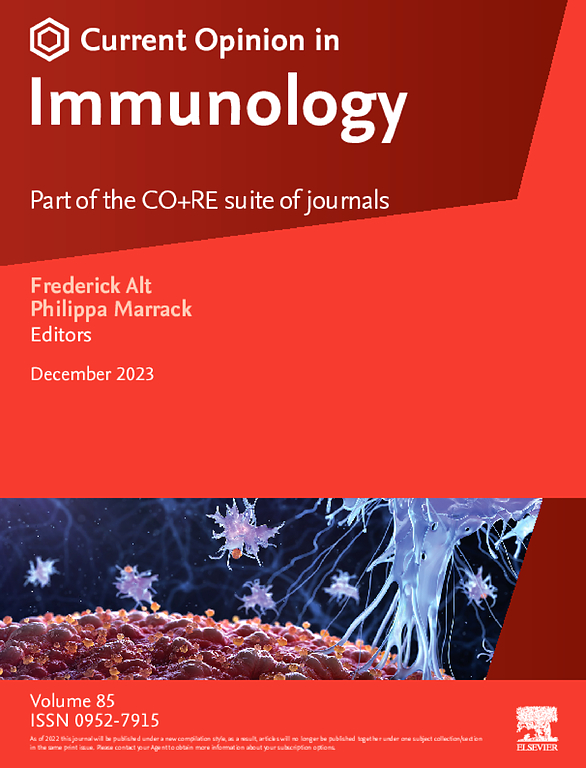保护性还是致病性?簇状细胞在蠕虫和病毒感染中形成不同的免疫结果
IF 5.8
2区 医学
Q1 IMMUNOLOGY
引用次数: 0
摘要
簇状细胞是上皮哨兵,监测全身屏障部位的腔内环境。近十年前,它们作为肠道中针对蠕虫和原生生物的2型免疫的关键启动物的功能出现了。从那时起,人们已经描述了抗蠕虫免疫的关键簇毛细胞机制和效应物,但它们对更广泛的微生物(如病毒)的反应仍然知之甚少。在这里,我们回顾了簇状细胞在肺和肠道等屏障组织的蠕虫和病毒感染中的作用。虽然簇状细胞可以防止寄生虫感染,但它们对病毒感染和病理表现出更广泛的、有时是相互矛盾的影响。我们探索了簇毛细胞在抗病毒反应中的新兴和环境依赖性作用,并研究了簇毛细胞在蠕虫-病毒共感染过程中如何作为分子开关,从而显著改变感染结果。本文章由计算机程序翻译,如有差异,请以英文原文为准。
Protective or pathogenic? Tuft cells shape divergent immune outcomes in helminth and viral infections
Tuft cells are epithelial sentinels that monitor the luminal environment at barrier sites throughout the body. Their function as crucial initiators of type 2 immunity against helminths and protists in the intestine emerged nearly a decade ago. Since then, key tuft cell mechanisms and effectors involved in anti-helminth immunity have been described, but their responses to a wider array of microbes, like viruses, remain far less understood. Here, we review the roles of tuft cells during both helminth and viral infections at barrier tissues like the lung and the gut. While tuft cells protect against parasite infections, they exhibit a wider and sometimes contradictory influence on viral infections and pathology. We explore the emerging and context-dependent role of tuft cells in antiviral responses and examine how tuft cells act as molecular switches during helminth–viral co-infections to dramatically alter infection outcomes.
求助全文
通过发布文献求助,成功后即可免费获取论文全文。
去求助
来源期刊
CiteScore
13.30
自引率
1.40%
发文量
94
审稿时长
67 days
期刊介绍:
Current Opinion in Immunology aims to stimulate scientifically grounded, interdisciplinary, multi-scale debate and exchange of ideas. It contains polished, concise and timely reviews and opinions, with particular emphasis on those articles published in the past two years. In addition to describing recent trends, the authors are encouraged to give their subjective opinion of the topics discussed.
In Current Opinion in Immunology we help the reader by providing in a systematic manner: 1. The views of experts on current advances in their field in a clear and readable form. 2. Evaluations of the most interesting papers, annotated by experts, from the great wealth of original publications.
Current Opinion in Immunology will serve as an invaluable source of information for researchers, lecturers, teachers, professionals, policy makers and students.
Current Opinion in Immunology builds on Elsevier''s reputation for excellence in scientific publishing and long-standing commitment to communicating reproducible biomedical research targeted at improving human health. It is a companion to the new Gold Open Access journal Current Research in Immunology and is part of the Current Opinion and Research(CO+RE) suite of journals. All CO+RE journals leverage the Current Opinion legacy-of editorial excellence, high-impact, and global reach-to ensure they are a widely read resource that is integral to scientists'' workflow.

 求助内容:
求助内容: 应助结果提醒方式:
应助结果提醒方式:


